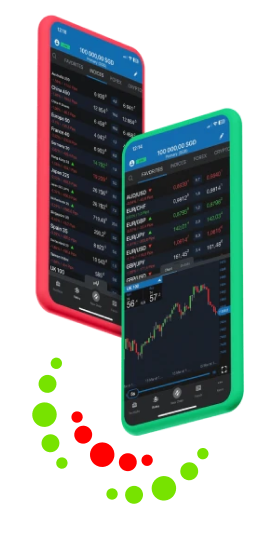● Before diving into CFD trading, take the time to educate yourself about the basics of trading, risk management, and the specific features of CFDs. Understand how leverage works and the potential risks involved.
● Select a reputable and regulated broker that offers a user-friendly trading platform, competitive spreads, and a wide range of tradable assets. Ensure that the broker has a good track record and provides reliable customer support.
● Create a trading plan that outlines your goals, risk tolerance, and trading strategy. Determine your entry and exit points, position sizing, and risk management techniques. Stick to your plan and avoid impulsive decisions based on emotions.
● Implement risk management techniques to protect your capital. Set stop-loss orders to limit potential losses and take-profit orders to secure profits. Consider using trailing stops to lock in gains as the market moves in your favor.
● Avoid putting all your eggs in one basket. Diversify your CFD portfolio by trading different assets across various sectors and regions. This can help spread your risk and potentially increase your chances of finding profitable opportunities.

● If you are new to CFD trading, consider starting with a demo account provided by your broker. This allows you to practice trading strategies and get familiar with the platform without risking real money.
● Regularly review and monitor your open positions. Adjust your stop-loss and take-profit levels as the market moves to protect your profits and limit potential losses. Avoid leaving trades unattended for extended periods.
● Trading involves learning from both successes and failures. Analyze your trades, identify mistakes, and learn from them. Keep a trading journal to track your trades and record your thoughts and emotions during each trade.
● Emotions can often cloud judgment and lead to impulsive decisions. Stick to your trading plan, avoid chasing losses, and don’t let greed or fear dictate your trading decisions. Maintain discipline and stay focused on your long-term goals.
● Remember, CFD trading carries risks, and it’s important to only trade with funds you can afford to lose. Continuously learn, adapt, and refine your trading strategies as you gain experience in the market.
● Before diving into CFD trading, take the time to educate yourself about the basics of trading, risk management, and the specific features of CFDs. Understand how leverage works and the potential risks involved.
● Select a reputable and regulated broker that offers a user-friendly trading platform, competitive spreads, and a wide range of tradable assets. Ensure that the broker has a good track record and provides reliable customer support.
● Create a trading plan that outlines your goals, risk tolerance, and trading strategy. Determine your entry and exit points, position sizing, and risk management techniques. Stick to your plan and avoid impulsive decisions based on emotions.
● Implement risk management techniques to protect your capital. Set stop-loss orders to limit potential losses and take-profit orders to secure profits. Consider using trailing stops to lock in gains as the market moves in your favor.
● Avoid putting all your eggs in one basket. Diversify your CFD portfolio by trading different assets across various sectors and regions. This can help spread your risk and potentially increase your chances of finding profitable opportunities.
● Stay updated with market news, economic events, and company announcements that may impact the assets you are trading. Use the research tools provided by your broker to analyze market trends, charts, and technical indicators.
● If you are new to CFD trading, consider starting with a demo account provided by your broker. This allows you to practice trading strategies and get familiar with the platform without risking real money.
● Regularly review and monitor your open positions. Adjust your stop-loss and take-profit levels as the market moves to protect your profits and limit potential losses. Avoid leaving trades unattended for extended periods.
● Trading involves learning from both successes and failures. Analyze your trades, identify mistakes, and learn from them. Keep a trading journal to track your trades and record your thoughts and emotions during each trade.
● Emotions can often cloud judgment and lead to impulsive decisions. Stick to your trading plan, avoid chasing losses, and don’t let greed or fear dictate your trading decisions. Maintain discipline and stay focused on your long-term goals.

Get started with your Lunatrade account today.